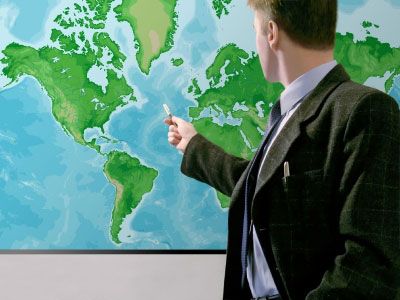Two recent business trips sparked a shift in my view of international development opportunities. Normally, I advocate primary export focus on developed countries with disposable income to afford premium brands. The new look urges a heavier investment in time and resources to pioneering “new frontier” markets which serve as our future growth pipeline.
Spent a week in bustling Brazil. Business only, though tempted by the lure of Rio’s beaches. Conducted seven meetings in five days with a mosaic of distributors and brand owners of all sizes. Energetic business partners from all sectors reported 10-25 % annual growth rates for the past three years. Company owners were upbeat, speaking boldly about future investment plans in advance of the World Cup and Olympics. Arrived at the Sao Paolo airport and joined a line of 200 businessmen waiting for business express check-in for our flight back to the USA. Disgruntled with the unprecedented queue, we shared travelers experiences but the conversations shifted quickly to deals brewing and new factories.
Later, made a trip to Germany, the largest economy in Europe. Brand owners solemnly spoke of difficult retailer negotiations and fear of defaults in the euro zone. Several companies admitted that robust sales in Asia and the Middle East served as their “saviors” in 2021, offsetting negative conditions in Europe. I was invited to speak at the annual distributor meeting for a global brand selling to more than 100 countries. No surprise that “Distributor of the Year” award winners hailed from China and Brazil, while the European crowd shrank in their seats, due to flat to declining shipment results.
Listed below are a few “Lessons Learned” as we look at redefining our global priorities.
1. Get started today in Brazil,India,South Africa & Saudi Arabia!
In the past, we agreed on one thousand reasons to avoid these complex markets. Companies need to “plant a flag” in these regional capitals now or risk obscurity or a costly penalty when you try to “join the party” when it is half over.
2. Calibrate Expectations: Small business but smaller investment too.
Realistically, shipments will be modest during your first few years in emerging markets.
2-3 investment years in the life of a brand is a short period of time. Fortunately, the cost of entry is also relatively low. It is relatively easy to make focused consumer and trade marketing investments to your prime potential consumer.
3. Invest in People, Presence, and Training
In this case, people are your most valuable asset. Adopt the right mix of sending a “missionary” from company headquarters with hiring local people who know the market and can learn your brand. Spend time in the field with sales teams and avoid spending hours in comfortable meeting rooms.
4. Think Small: Package’s and Prices
Consumer spending power is frequently an issue in developing and new frontier markets.
Many consumers in these countries shop everyday, purchasing affordable package sizes.
Consider smaller sizes that will deliver lower retail shelf prices. Reduce your case pack to manageable sizes that can fit on a sales van or in one facing at a small shop.Consider local contract packers.
5. Distributors: Local experts, lower risk option
Distributors supply an international brand with a “virtual subsidiary”.This allows manufacturers to focus on brand building versus expensive investments in start up infrastructure. New entrants may need to partner with a small to mid size distributor willing to pioneer your brand froma zero sales base.Export Solutions database tracks 9,200 distributors of all sizes in 96 countries. “A distributor for every exporter”.
6. Leverage Relationships with Global Retailers
Walmart,Carrefour, Tesco, and Auchan often serve as international brand showcases in developing markets. These retailers understand the power of your brand and commitment to category innovation. Your global retailer relationship may encourage a distributor to take your brand, with the promise of listing at an international customer.
7. Core “Western” business will survive.
If you had $500,000 to invest in marketing, where would you place it ?
Low growth France,Spain, or Japan ? Or Brazil,India, or Turkey ? You will receive better long term ROI from new frontier markets versus battling for market share in costly, mature markets.
Contact us for help in 96 countries.


